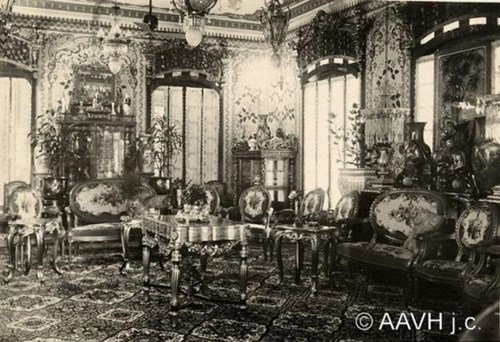August 06, 2018 | 21:47 (GMT+7)
Royal palace to be restored to glory
Hue city, the Central province of Thua Thien-Hue, has announced plans to restore a palace in the former royal citadel in an attempt to give visitors a glimpse at how the former kings of the Nguyen Dynasty (1802-1945) lived.
The People’s Committee of Thua Thien-Hue province recently approved funding of VND 123 billion (USD 5.2 million) for the restoration of Kien Trung Palace inside the dynasty’s imperial city.
It will be the first restoration project to take place at the palace since it was destroyed in 1947 during the war. The Hue Monuments Conservation Center will oversee the project.
The center’s director Phan Thanh Hai said a plan had been drawn up using old images of the palace.
    |
 |
|
The hall where King Bao Dai met the Japanese ambassador in 1945. Photo: aavh.org |
Starting later this year, the restoration project will cover two storeys with three stone stairways carved with dragon designs as well as a dragon embossment on the rooftop. The project is scheduled for completion in 2020.
In the imperial city, Kien Trung Palace stood behind the Thai Hoa Palace, which served as the main meeting hall for kings and their mandarins.
The palace was the home of the dynasty’s last kings, Khai Dinh and Bao Dai.
The palace was built in a mixture of French, Italian Renaissance and old Vietnamese architectural styles by King Khai Dinh in 1923. Earlier at the site, there was a pavilion built by King Minh Mang and later repaired by King Tu Duc and King Duy Tan.
King Khai Dinh drew his last breath at the palace in 1925. His son, King Bao Dai, lived in it with his first queen Nam Phuong. Five of their children were born there, including two princes and three princesses.
In March 1945, King Bao Dai met the Japanese ambassador at the palace to announce Vietnam’s independence from French colonialism.
Source: VNA